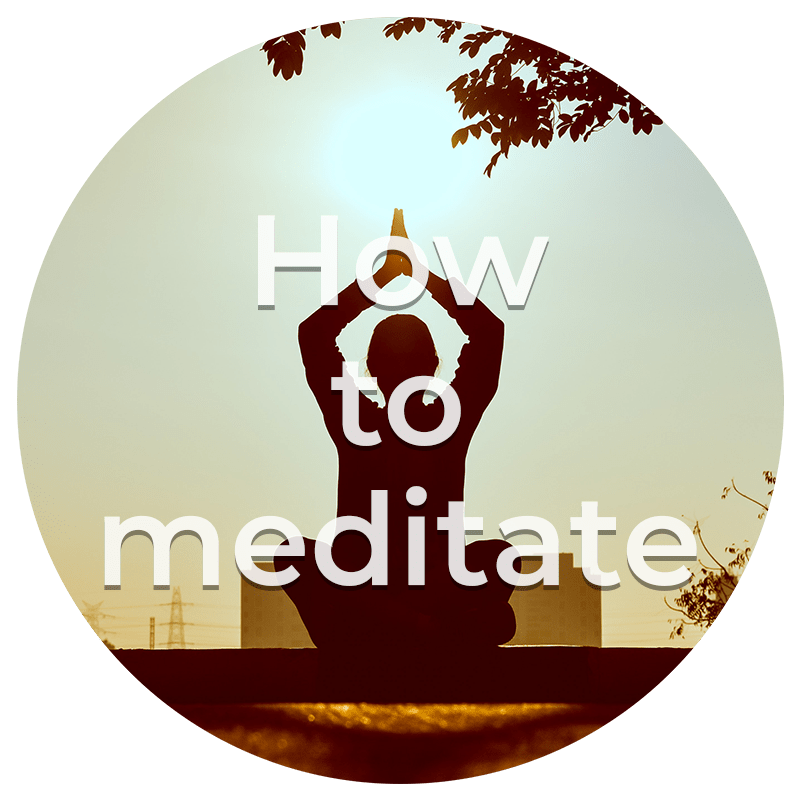Discover Your Path to Self-Discovery and Personal Growth
Experience the Power of Mind-Body Healing
Meditation explained
Meditation is a practice that involves training the mind to focus and redirect thoughts. It typically involves sitting comfortably, closing the eyes, and directing attention to something specific, such as the breath or a mantra.
One theory is that meditation works by calming the sympathetic nervous system and activating the parasympathetic nervous system. The sympathetic nervous system is responsible for the “fight or flight” response, while the parasympathetic nervous system is responsible for the “rest and digest” response. By activating the parasympathetic nervous system through meditation, the body can relax and reduce stress.
Another theory is that meditation works by strengthening the prefrontal cortex, the part of the brain responsible for executive function, decision-making, and impulse control. This can lead to better emotional regulation and more stable moods.
Finally, some researchers believe that meditation works by altering brainwave patterns. EEG studies have shown that different types of meditation can produce different brainwave patterns, such as alpha waves, theta waves, or gamma waves. These patterns are associated with different mental states, such as relaxation, creativity, or heightened awareness.


Practicing meditation
By practicing meditation, you influence brainwave activity and shift the brain into a more relaxed and focused state. Studies have shown that meditation can increase alpha and theta brainwave activity, which is associated with reduced anxiety, improved mood, and increased creativity.
When a person meditates, they aim to quiet their mind, focus their attention, and achieve a state of inner calm and stillness. Alpha and theta brainwaves are the brainwave patterns that are typically present during this state, which is why they are often associated with meditation.
All great things have small beginnings.
Saint Teresa of Avila
Benefits of meditation
Physical benefits
Reduced stress
Reduce the level of cortisol, the stress hormone, in the body, which can lead to a reduction in overall stress levels.
Improved sleep
Regulate sleep patterns and promote better quality sleep.
Lower blood pressure
Consistent meditation practice has been linked to reduced blood pressure levels, which can lower the risk of cardiovascular disease.
Boosted immune system
Boost the immune system by increasing the production of antibodies and activating immune cells.
Pain management
Reduce the perception of pain and increase pain tolerance, making it an effective tool for managing chronic pain.
Improved breathing
Improve breathing patterns, making it easier to take deeper breaths, which can have a positive impact on overall health.
Mental benefits
Reduced anxiety and depression
Reduce symptoms of anxiety and depression, as it helps to regulate the activity in the brain’s default mode network, which is associated with these mental health conditions.
Improved focus and concentration
Improve focus and concentration by increasing the thickness of the prefrontal cortex, which is the part of the brain responsible for these functions.
Increased self-awareness
Increase self-awareness by allowing individuals to observe their thoughts, feelings, and emotions without judgment.
Enhanced emotional well-being
Promote emotional well-being by reducing the reactivity of the amygdala, the part of the brain responsible for the fight-or-flight response to stressors.
Better stress management
Manage stress by reducing the physiological response to stress, such as heart rate and blood pressure.
Improved cognitive function
Improve cognitive function, including memory, processing speed, and decision-making skills.
Greater overall happiness
Increase feelings of happiness and well-being, potentially due to its ability to promote positive thinking patterns and reduce negative emotions.
How to meditate

Establishing a Daily Meditation Practice
Find a specific time and place for meditation: One of the most important steps in establishing a daily meditation practice is to find a specific time and place where you can meditate consistently. This can be a quiet corner of your home, a park or garden, or any other place where you can be undisturbed. Choose a time of day when you are likely to be most alert and awake, such as early in the morning or in the evening after work.
Start small and gradually increase: It’s important to start with just a few minutes of meditation each day and gradually increase the time as you become more comfortable with the practice. This will help you build your meditation muscles gradually and avoid the frustration and burnout that can come from trying to do too much too soon. Begin with just five minutes of meditation each day, and then gradually increase the time by a minute or two each week.
Practice mindfulness throughout the day: In addition to setting aside a specific time and place for meditation, it’s also helpful to practice mindfulness throughout the day. This means bringing your attention to the present moment as often as possible, whether you’re eating, walking, or doing other activities. Mindfulness can help you stay focused and centered, and it can also help you develop greater awareness and appreciation of your surroundings.
Be kind and patient with yourself: Remember that meditation is a skill that takes time and practice to develop. Don’t get discouraged if you don’t see immediate results, or if you find it difficult to sit still and focus at first. Be kind and patient with yourself, and remember that every moment of practice is a step toward greater peace and wellbeing.
Set a meditation intention: Before you start meditating, take a few moments to set an intention for your practice. This can be something simple like “I want to cultivate more inner peace” or “I want to release stress and tension”. Having a clear intention can help you stay focused and motivated during your practice.
Make meditation a non-negotiable part of your routine: To establish a daily meditation practice, it’s important to make it a non-negotiable part of your routine. Treat it like brushing your teeth or taking a shower – something that you do every day, no matter what. This can help you establish a regular habit and make it easier to stick with your practice over time.
Prepare your place for meditation
Choose a quiet and clutter-free space: Choose a space in your home that is quiet and free from distractions. This can be a spare room, a corner of your bedroom, or any other space that feels calm and peaceful. It’s also important to remove any clutter or distractions from the space, such as piles of laundry or stacks of books.
Remove any distractions from your space. This could include turning off your phone or TV, closing the door to your room, or putting away any clutter or unnecessary items.
Eliminate distractions: Turn off your phone, computer, and other devices that could distract you during your practice. If possible, let others in your household know that you are meditating and ask for privacy.
Choose comfortable seating: It’s important to choose a comfortable seating arrangement for your meditation practice. This can be a cushion on the floor, a meditation bench, or a comfortable chair. The goal is to find a position that allows you to sit comfortably for an extended period of time.
Set the mood with lighting: Lighting can play a big role in setting the mood for your meditation practice. Soft lighting, such as candles or dim lamps, can help create a calming and relaxing atmosphere. Natural light is also a great option, especially during the early morning or late afternoon.
Play relaxing music or nature sounds if desired. Soft instrumental music or natural sounds like ocean waves or birdsong can help create a peaceful atmosphere and enhance your practice.
Use aromatherapy: Aromatherapy can be a powerful way to enhance your meditation practice. Essential oils, such as lavender or frankincense, can help promote relaxation and calmness. You can use a diffuser, candles, or simply place a few drops of oil on a tissue or cotton ball.
Add natural elements: Incorporating natural elements into your meditation space can help create a sense of grounding and connection to the earth. You can add plants, stones, shells, or any other natural objects that resonate with you.
Consider adding meaningful items to your space. This could include a statue or image of a spiritual figure, a meaningful quote or mantra, or a plant or flower.
The most important aspect of your meditation space is that it feels comfortable, calming, and supportive of your practice. With a little bit of effort and intention, you can create a space that helps you connect with your inner peace and stillness.

Limiting Beliefs
Beliefs are powerful tools that can shape our reality, both positively and negatively. Our beliefs are formed through our experiences and perceptions, and can be either empowering or limiting.
By identifying subconscious beliefs that may be holding you back, and replace them with more positive and empowering beliefs, you can transform your life and create more positive outcomes.
Once you have identified the limiting belief, you should be asking yourself, “What would I rather believe instead?” This helps to clarify the opposite belief that you want to instill in your subconscious mind. For example, if your limiting belief is “I am not good enough,” the opposite belief might be “I am worthy and deserving of love and success.”
Once you have identified the opposite belief, you can use various techniques, such as visualization or affirmation, to help instill this belief in your subconscious mind. This can involve repeating positive affirmations, visualizing yourself embodying the opposite belief, or using other techniques to reinforce the positive belief.

Limiting and positive beliefs examples

“I don’t have enough time”

“I have plenty of time to do what’s important to me” or “I prioritize my time wisely to make room for meditation”.

“I can’t sit still or quiet my mind”

“I am capable of sitting still and quieting my mind.”

“Meditation is too spiritual or religious”

“Meditation is a simple and secular practice that anyone can do regardless of their beliefs or background.”

“I’m not good at it”

“I am capable of learning and improving with practice.”

“It won’t work for me”

“I am open to trying new things and believe that meditation can work for me.”

“It’s too hard to find a quiet space”

“I can create a peaceful environment anywhere I am.”

“I’m too anxious or stressed to meditate”

“Meditation can help me reduce my anxiety and stress levels.”

“I don’t know how to meditate”

“I can learn how to meditate by seeking guidance and practicing regularly”.

“I don’t have any specific goals or intentions for my meditation practice”

“I am open to exploring and discovering the benefits of meditation, and I trust that my practice will naturally guide me towards my intentions and goals.”

“I’m too skeptical about the benefits of meditation”

“I am open to exploring and experiencing the benefits of meditation, and willing to give it a try with an open mind.”
Frequently asked questions
The way you position your hands and eyes can affect your level of comfort and focus. Here are some common hand and eye positions for meditation:
Hands:
Rest your hands in your lap, with your palms facing up or down.
Place your hands on your knees or thighs, with your palms facing down.
Bring your hands together in front of your chest, forming a prayer position.
Eyes:
Close your eyes to reduce visual distractions and enhance inward focus.
Keep your eyes open, focusing on a specific point or object in front of you.
Lower your gaze, keeping your eyes partially open and relaxed.
The hand and eye positions you choose may depend on the type of meditation you practice, your personal preferences, and your level of comfort. Experiment with different positions to find what works best for you.
In addition to hand and eye positions, posture also plays an important role in meditation. Sit upright with your spine straight and your shoulders relaxed. You can sit on a cushion or chair, or even lie down if that’s more comfortable for you.
It’s normal for thoughts to arise during meditation, as the mind naturally generates thoughts. In fact, it’s impossible to stop thoughts from occurring altogether. The key is to simply observe these thoughts without judgment and then return your attention to the object of meditation, such as the breath or a mantra.
Many people mistakenly believe that having thoughts during meditation means they are not doing it “right” or that they are not achieving the desired state of calm and focus. However, this is not true. It’s important to recognize that having thoughts during meditation is a natural and normal part of the process.
Rather than viewing thoughts as a distraction or obstacle to meditation, it’s helpful to view them as an opportunity to practice mindfulness and develop greater awareness of one’s own thought patterns. With regular practice, it’s possible to train the mind to become more focused and less reactive to thoughts, resulting in a greater sense of inner peace and calm.
While some meditation practices may recommend specific sitting positions, there is no one right way to sit during meditation. The most important thing is to find a comfortable and stable posture that allows you to maintain focus and relaxation.
Here are some common sitting positions for meditation:
Cross-legged position: Sit on a cushion or folded blanket with your legs crossed and your hands resting on your knees or in your lap. This is a traditional posture often used in meditation practices like Zen and Vipassana.
Kneeling position: Kneel on a cushion or folded blanket with your shins and feet tucked underneath you, and your hands resting on your thighs or in your lap. This posture is commonly used in Tibetan Buddhism and other forms of meditation.
Seated position: Sit on a chair with your feet flat on the ground and your hands resting on your lap. This position can be a good option for people who have difficulty sitting on the floor or kneeling.
Lying down position: Lie on your back with your arms at your sides and your palms facing up. This posture can be a good option for people who have difficulty sitting for long periods of time or who experience discomfort in their back or hips.
Whichever position you choose, it’s important to maintain a straight spine and relaxed shoulders to promote alertness and relaxation. You may also want to experiment with using a cushion or blanket to support your hips or knees, and to find a quiet and comfortable space to practice. Ultimately, the goal of meditation is to cultivate a sense of inner peace and stillness, so choose a position that supports this intention and feels comfortable for you.
The duration of a meditation session can vary depending on the individual, the type of meditation, and personal preference. While some people may meditate for just a few minutes, others may meditate for several hours.
Here are some general guidelines on meditation session duration:
Beginners: If you’re new to meditation, it’s recommended to start with shorter sessions, such as 5-10 minutes, and gradually increase the duration over time.
Intermediate: Once you’ve established a regular meditation practice, you may want to aim for sessions of 20-30 minutes.
Advanced: Some experienced meditators may choose to meditate for longer periods of time, such as 1-2 hours or more.
Remember that the duration of your meditation session is less important than the consistency of your practice. It’s better to meditate for a shorter amount of time each day than to meditate for a longer period of time only occasionally.
Additionally, it can be helpful to set a regular schedule for your meditation practice. Aim to meditate at the same time each day, whether that’s in the morning, during your lunch break, or in the evening. This can help establish a routine and make meditation a habit.
Ultimately, the length of your meditation session should be based on what feels comfortable and sustainable for you. Experiment with different durations and find what works best for your lifestyle and goals.
Distractions, such as sounds, are a common experience during meditation. While it can be challenging to maintain focus in the midst of distractions, there are several strategies that can help.
Acknowledge the distraction: When you hear a sound that pulls your attention away from your breath or other point of focus, simply acknowledge it without judgment. Label the distraction as “sound” and then gently redirect your attention back to your breath.
Reframe the distraction: Instead of viewing the sound as a hindrance to your practice, reframe it as an opportunity to cultivate mindfulness. Use the sound as an anchor for your awareness, noticing its pitch, volume, and duration, and then returning to your breath.
Change your environment: If external sounds are consistently distracting you, consider changing your environment. You can try meditating in a quieter room, using earplugs, or playing soft background music or white noise to help mask external sounds.
Embrace the distraction: Sometimes, rather than fighting a distraction, it can be helpful to lean into it. If a sound is particularly loud or jarring, allow yourself to fully experience it, noticing any sensations or emotions it brings up, and then gently returning to your breath.
Remember that the goal of meditation is not to eliminate distractions, but to develop a greater sense of awareness and presence. By practicing with distractions, you can learn to stay centered and focused even in challenging situations.
Meditation itself is not meant to be a painful experience, but it’s not uncommon for practitioners to experience discomfort, especially when first starting out. Here are some common sources of pain or discomfort during meditation and what to do about them:
Physical discomfort: Sitting still for an extended period of time can cause physical discomfort, such as back pain, stiffness, or numbness in the legs. To alleviate this, experiment with different sitting positions, use cushions or blankets for support, and take breaks if needed.
Mental discomfort: Meditation can bring up uncomfortable thoughts, emotions, or sensations. While it can be challenging to sit with these experiences, it’s important to acknowledge them without judgment and allow them to pass without getting caught up in them.
Striving or pushing too hard: Trying too hard to “get it right” or achieve a certain state of mind can create stress and tension, leading to physical or mental discomfort. Instead, approach meditation with a gentle and compassionate attitude, accepting whatever arises without judgment.
It’s important to remember that meditation is a practice that takes time and patience to develop. It’s normal to experience discomfort or even resistance when first starting out, but with regular practice, these challenges often become less intense. If you continue to experience significant pain or discomfort during meditation, it may be helpful to work with a teacher or healthcare professional to explore alternative approaches.
Free guided meditations
We’re so excited to offer these meditations to you, because we truly believe that meditation can help enrich your spiritual world and promote overall wellbeing.
We want to help you establish a regular meditation practice and deepen your connection to yourself and the world around you. That’s why we’ve designed our guided meditations to be accessible to beginners, while still being enjoyable for meditators of all levels. Whether you’re just starting out or looking to take your practice to the next level, we’ve got something for you.
We believe that meditation is a form of self-care and self-discovery, and our guided meditations are here to support you on your journey. We offer a variety of styles, from mindfulness meditations to body scan meditations to loving-kindness meditations. We want you to find the style that works best for you and helps you cultivate greater peace, relaxation, and awareness.
And the best part? All of our guided meditations are completely free and accessible anytime, anywhere. We invite you to explore our collection of meditations and discover the transformative power of meditation for yourself.






